Best
AFFORDABLE
DOUBLE BASS
Top Bass MADE BY GEAR4MUSIC
-
Overall: Quality Canadian Spruce & Maple Body
-
Best Feature: Comes with a Bow & Hard Case
-
TedScore™: 8.3/10
Best
OVERALL
DOUBLE BASS
-
Overall: Canadian Spruce & Maple
-
Best Feature: Comes with a Bow & Hard Case
-
TedScore™: 8.8/10
Best
BEGINNER
DOUBLE BASS
-
Overall: Includes Solid Spruce Top, Solid Flamed Maple Back & Sides
-
Best Feature: WithBow & Cover
-
TedScore™: 7/10
Is double bass hard to learn? You might be asking this very question at the moment.
Given its size and length, learning the instrument may seem difficult. Not to mention the different notes, scales, double bass music theories, and music sheets you must learn and play.
It’s the giant of the string family, and getting to grips with its size and strings can be quite a struggle. As a beginner, you might find the physicality of playing the double bass is a little daunting at first.
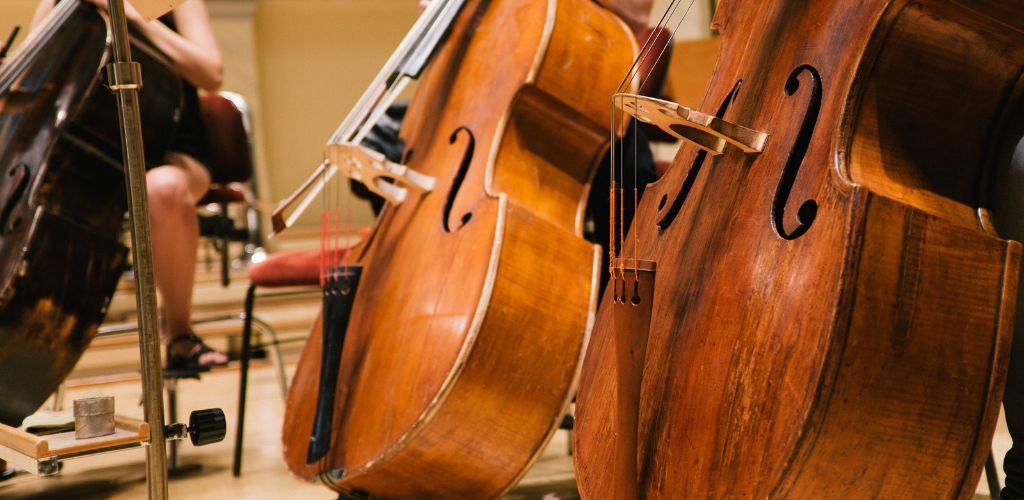
Learning the double bass or upright bass presents a unique set of challenges and rewards. It’s not just about size and strength; it’s about technique and passion.
You’ll delve into a world of intricate finger placements and bowing techniques that might initially seem complex. But with persistence and practice, you’ll begin to feel the rhythm and sync with the soulful vibrations of this mighty instrument.
Your path to mastering the double bass, either playing electric bass or an acoustic bass, is a thrilling adventure waiting to unfold, one note at a time.
Getting Started
with the Double Bass
Starting your double bass journey is challenging yet exciting!
Selecting a bass that fits your frame and starting with the techniques that will form your musical foundation is key.
Choosing the Right Size and Type
You wouldn’t wear shoes that don’t fit, right?
Similarly, finding a double bass that’s the right size for you is crucial.
4/4 (full size) – perfect for a player 6 feet above
3/4 (most common for adults) – for players that are 5 to 6 feet
7/8 size – for 5.5 feet to 6+ feet
Smaller sizes – for younger bass players

As a professional double bass player, I highly encourage starting with string bass in a 3/4 size, which is often best for beginners; it’s easily handled and widely available.
As a member of the violin family, your double bass trusts you to choose whether to delve into classical, jazz, or other genres.
Double Basses I'd love for You to Check Out!
After playing the Archer Size Professional Double Bass, I’m really impressed with its deep, rich tone and the quality craftsmanship evident in its build.
The instrument’s playability and responsiveness make it a joy to play in a jazz ensemble or a classical setting.
Archer Size Professional Double Bass
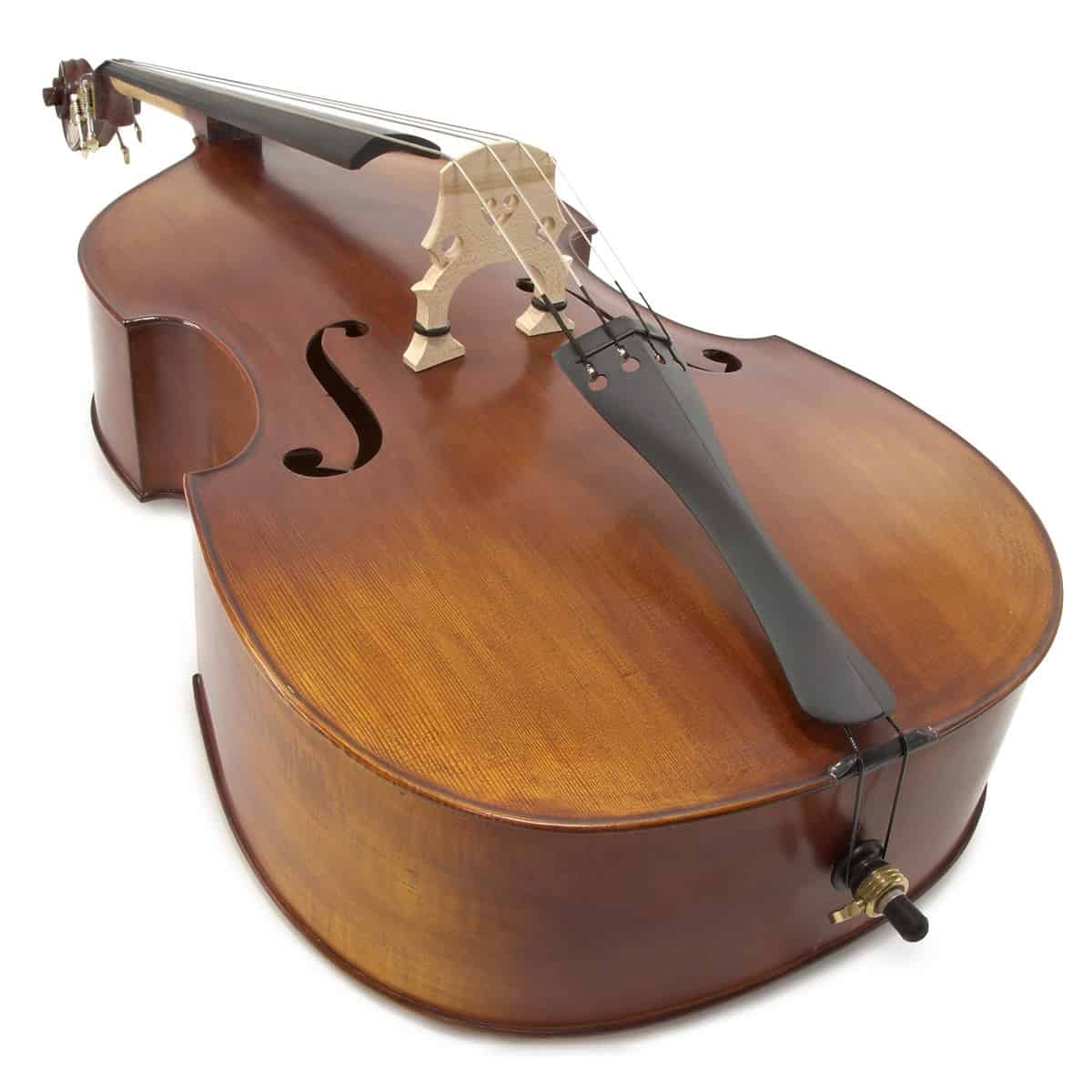
COMES WITH: Bow & Hard Case
FEATURES: Canadian Spruce & Maple
Archer Size Professional Double Bass
- Plucked tone is warm and well balanced
- None
When you click ‘Check Price’, you’ll see there are loads of great places to buy this item. Our personal favorite is Sweetwater for the US, and Thomann and Gear4Music for the UK & Europe.
They are the largest music retailers, with excellent customer service, competitive prices, really fast shipping, and the longest guarantees.
The professional musician who wrote this article combined many things,
from the product build, manufacturer’s reputation through to feedback
from other users, to create our famous TedScore™.
I recently had the opportunity to play the Stentor Conservatoire. It is a solid instrument with a warm, resonant sound that is ideal for students and intermediate players.
Its build quality and playability offer great value for its price, making it a worthwhile investment for those looking to develop their double bass playing skills.
Stentor Conservatoire

COMES WITH: Bow & cover
FEATURES: Includes Solid Spruce Top, Solid Flamed Maple Back & Sides
Stentor Conservatoire
- Excellent price for a fully-carved double bass
- Great sound
- Reliable and consistent brand
- Comes with bow and cover
- Handcrafted for a unique finish
- Would benefit from a professional set-up and new strings to maximise its sound quality
- Less attractive to look at than other fully-carved basses
When you click ‘Check Price’, you’ll see there are loads of great places to buy this item. Our personal favorite is Sweetwater for the US, and Thomann and Gear4Music for the UK & Europe.
They are the largest music retailers, with excellent customer service, competitive prices, really fast shipping, and the longest guarantees.
The professional musician who wrote this article combined many things,
from the product build, manufacturer’s reputation through to feedback
from other users, to create our famous TedScore™.
I was thoroughly impressed with the Deluxe Solid Top Bass’s exceptional tone clarity and sustain, thanks to the solid spruce top, which enhances the sound quality.
The instrument feels sturdy and well-constructed, offering a comfortable playing experience and a professional feel that exceeds expectations for its price range.
Deluxe Solid Top Bass

COMES WITH: Bow & Hard Case
FEATURES: Quality Canadian Spruce & Maple Body
Deluxe Solid Top Bass
- 2-year warranty & 30-day money-back guarantee
- Triple Hand Lacquered & Varnished Orange-Brown Finish
- None
When you click ‘Check Price’, you’ll see there are loads of great places to buy this item. Our personal favorite is Sweetwater for the US, and Thomann and Gear4Music for the UK & Europe.
They are the largest music retailers, with excellent customer service, competitive prices, really fast shipping, and the longest guarantees.
The professional musician who wrote this article combined many things,
from the product build, manufacturer’s reputation through to feedback
from other users, to create our famous TedScore™.
Fundamentals of Double Bass Technique
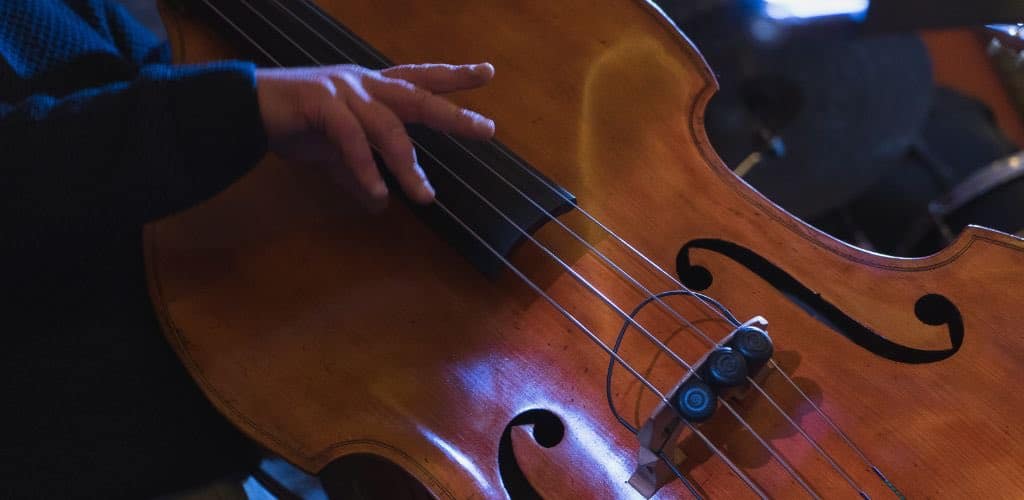
Your first technique step will be learning to stand (or sit) with the bass because good posture is the launching pad for great playing.
Whether bowing or plucking, how you hold yourself affects your sound and comfort in playing bass well.
Next, tune your strings, G, D, A, and E, from highest to lowest pitch.
Your fingers will dance along the fingerboard, so you must familiarize yourself with its geography through practice and exercises. Start with plucking (pizzicato), then graduate to bowing (arco).
Double bass lessons are your map in your pursuit of double bass mastery.
They come in many forms, from private tutor sessions of music teachers to online videos. But regardless of your choice, remember that practice, while not always perfect, makes progress.
Advancing Your
Double Bass Skills
Embarking on the journey to advance your double bass skills is like unlocking new levels in a game—you get to face new challenges and celebrate every victory.
Developing Advanced Techniques
Your fingers will become even more agile as you master bowing and plucking with precision.
You’ll tackle exercises designed to improve intonation and speed, confronting the intricacies of complex orchestralpieces and jazz solos.
Practicing with a metronome can solidify your timing and help ingrain those advanced rhythms in your muscle memory. A great bass player will never go wrong with this one!

Also, striving for a clear tone means becoming best friends with your rosin and refining your tuning routine. I recommend you make it a habit.
Keep your bowing technique sharp, for it sets the great bassists apart.
Legends like Ray Brown, Ron Carter, and Christian McBride didn’t achieve their iconic status overnight—it was all about consistent, focused practice!
If you want to know more about improving your double bass techniques, you may want to check out this article: IMPROVE YOUR DOUBLE BASS TECHNIQUE.
Exploring Genres and Playing Styles
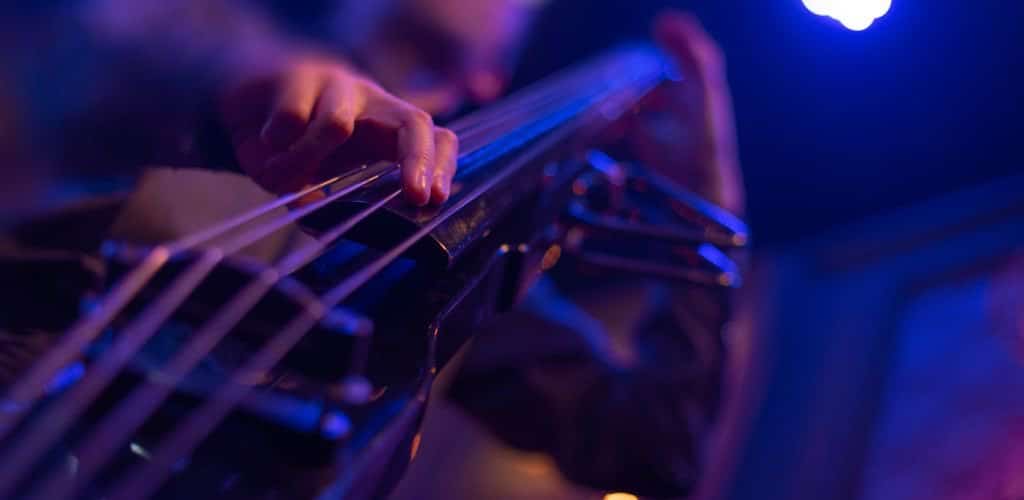
Another sure way to enhance your instrument skills is to dip your toes in different musical genres.
Jazz bass will have you grooving with syncopation and swing, while blues, rock, and bluegrass demand your gut strings to vibrate with soulful rhythms and lines.
Your interest should drive your musical journey—it’s how you’ll truly connect with the music.
Is Double Bass Hard to Learn:
Practice is the Key!
Learning the double bass can be an exciting venture. Its deep, resonant sounds could anchor any musical ensemble.
Your physical stature does play a role, as reaching around the instrument is necessary. But don’t worry, with proper technique, you’ll manage just fine.
The double bass requires a good ear for intonation due to its fretless fingerboard. Practice makes perfect, and developing your ear is part of the fun!
You’ll also need to master the bowing technique to excel. The bow is like a magic wand – use it to coax the music out!
Muscle strength and endurance are key, as the double bass is pretty sizable. Just think of it as part of your daily workout.
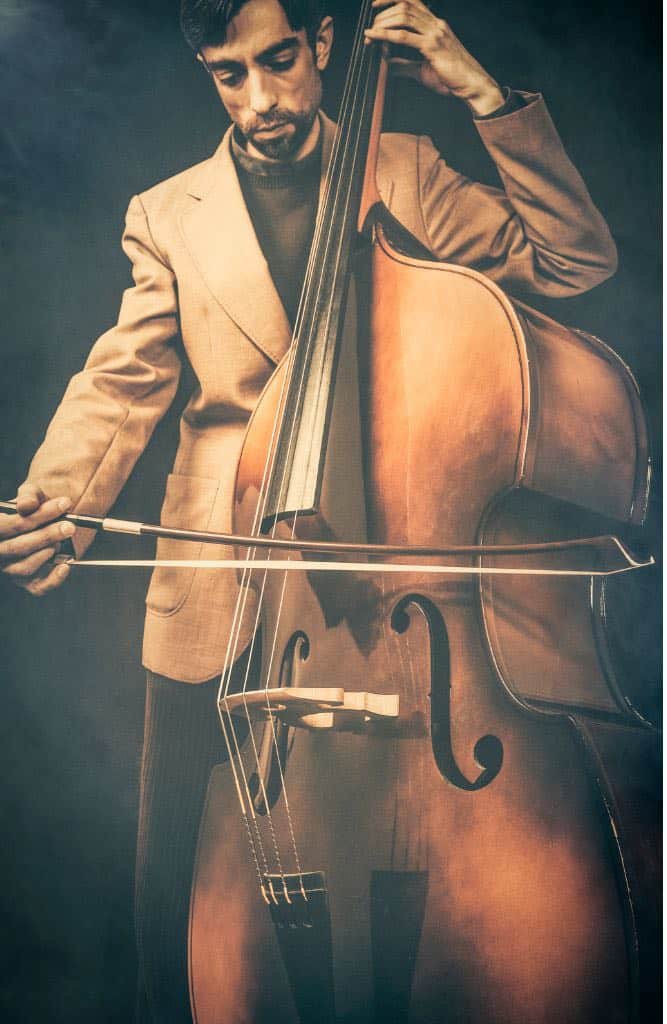
The learning curve is steep, but it’s also rewarding. Each milestone achieved will feel like a personal triumph!
I don’t want to say it’s hard, but it sure is challenging. But aren’t all the best things in life?
Imagine the thrill of creating those beautiful, booming bass guitar lines. The double bass may be big, but your determination to learn can be even bigger. Take the leap of faith!
AND THAT’S NOT THE END!
Now that you know what’s in store when learning the double bass and still want to pursue it, this next article will be like a treasure chest full of gold.
The next step is actually to own a double bass! Read this next one to have the best options for double basses for beginners!
FAQ's
Ans
Learning to play the double bass can be challenging due to its large size, scale, physicality required to handle the instrument, and precise finger placement and bowing technique. However, with consistent practice, proper instruction, and dedication, students can overcome these challenges and find playing the double bass rewarding and enjoyable.
wer
The double bass is considered hard to play because it is large, demanding considerable left-hand strength and reach for proper fingering and intonation. Additionally, mastering the bowing technique requires high coordination and control to produce a clean, resonant sound.
The double bass can be harder to learn than the violin due to its larger size, which requires more physical strength and reach, as well as the need to manage thicker strings and a longer fingerboard. However, the difficulty is subjective and can vary based on an individual’s physical attributes, musical background, and personal aptitude for the other string instruments.
The double bass is not typically considered easy to play, as it requires a good deal of physical strength, precise finger placement, and skillful bowing techniques due to its large size and string tension. However, players can learn to play it proficiently with consistent practice and good teacher guidance.











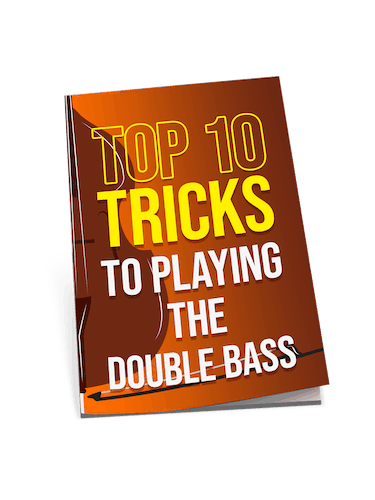
Hey everyone, just wanted to chip in on the ‘Is Double Bass Hard to Learn’ part. In my years of playing, I’ve found that, yes, it’s challenging, no doubt. But calling it hard might discourage newbies. It’s like any instrument; your progress is tied to your practice, passion, and a bit of patience. Plus, having a solid grasp on fundamentals is key. Without that, moving on to advanced techniques is gonna feel like hitting a wall. What do ya’ll think? Anyone found learning the double bass easier or harder compared to other instruments?
Great read, Robert Emery! I’ve been dabbling with the double bass for a bit and always find choosing the right size a bit of a puzzle. How crucial is the size for someone like me who’s not exactly aiming for concerts but more for personal enjoyment? Also, you mentioned the Archer Size Professional Double Bass and the Stentor Conservatoire. Would you lean more towards one for beginners, or is it more about personal feel and sound preferences?
I second StringSlinger88. It’s all about how it feels to you. Play before you pay if possible!
Hey BassBoomer72, choosing the right size definitely makes a difference in comfort and playability, especially as you’re getting started. Both models Robert mentioned are solid, but personal preference in sound and feel play a big part. Try them if you can!